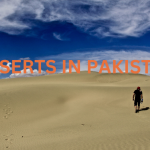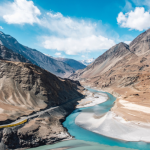Sehwan Sharif – A Sacred Pilgrimage Destination in Sindh

Sehwan Sharif is a city in the Jamshoro District of Sindh province of Pakistan. This ancient town situated on the west bank of the Indus River, is renowned for its sacred sites and unique heritage. It attracts pilgrims and travelers from across the globe. This comprehensive guide will delve into the essence of Sehwan Sharif, offering insights into its historical and cultural significance, attractions, weather, accommodation, transportation, and more.
Historical and Cultural Significance
Sehwan Sharif boasts a rich history dating back to the pre-Islamic period. The city was conquered by various rulers, including Muhammad bin Qasim in 711 AD and Mahmud of Ghazni in the 11th century. During the Thatta Kingdom, Sehwan Sharif served as the capital. It has influences from various empires and dynasties that left their mark on its culture and architecture.
The city’s cultural significance is primarily attributed to Lal Shahbaz Qalandar, a 13th-century Sufi saint, scholar, and poet who is celebrated for his piety and mystical teachings. Located in the heart of Sehwan Sharif, his shrine is known as Sehwan Sharif Mazar and is a focal point of devotion for millions. It has become a symbol of unity and harmony among people of different faiths.
Story Behind Sehwan Sharif’s Old Name
The exact origin of Sehwan Sharif’s name is a matter of debate among historians.
- Some of them believe that its name is as old as the era of the son of Adam, Prophet Shees, who was called Sheestan.
- According to the author Syed Muhibullah, the city was named after the great-grandson of Ham, son of Noah.
- William Dalrymple suggests it is named after Lord Shiva, taken from Shivistan.
- One of the renowned historians, Molai Sheedai mentions in his book “Tarikh-e-Tamadan-e-Sind” that Sewi Aryas constructed Sehwan and called it Sewistan.
Key Attractions and Landmarks
Sehwan Sharif Darbar
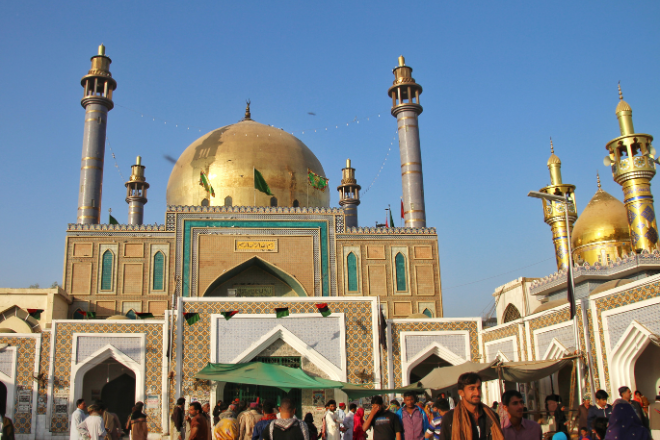
- Lal Shahbaz Qalandar Shrine is the city’s most famous landmark.
- It is dedicated to the revered Sufi saint Lal Shahbaz Qalandar, known for his mystic poetry and spiritual teachings.
- Pilgrims visit to seek blessings and participate in devotional activities.
- The shrine is notable for its striking architecture, including a large dome and a beautifully decorated entrance. The area around the shrine is often bustling with devotees.
Sehwan Sharif Fort
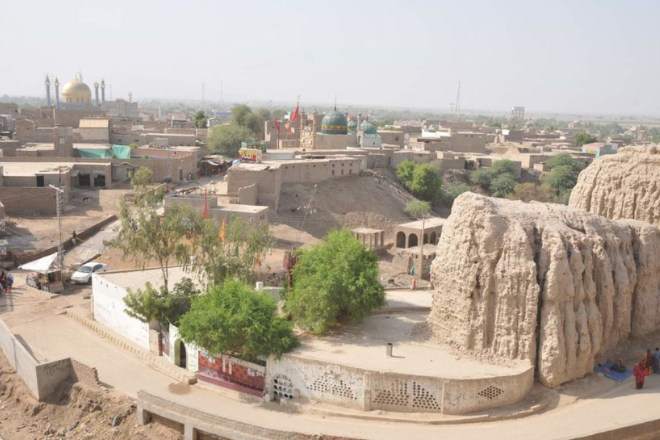
- Also known as Ulta Qila, this historic fortification offers panoramic views of the surrounding landscape.
- The fort has a fascinating history, including tales of its use as a military stronghold.
- The fort’s unique design and historical significance make it a must-visit for history enthusiasts.
- Its name, which translates to “Upside-Down Fort,” hints at its unconventional construction.
- Visitors can explore the fort’s ruins and enjoy the sweeping views of the Sehwan area from its elevated position.
Lal Bagh Sehwan Sharif
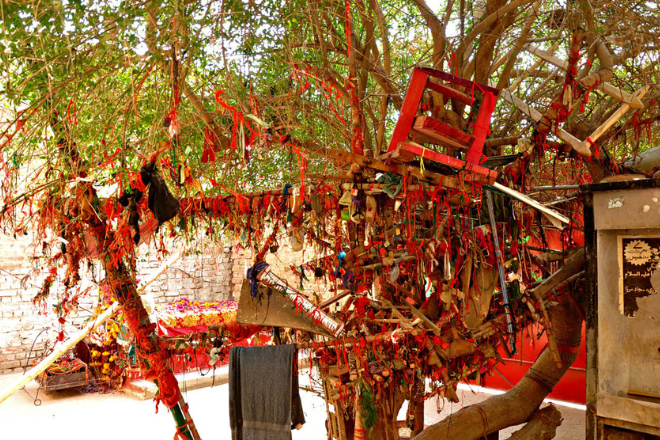
- Lal Bagh is a serene garden near the Lal Shahbaz Qalandar Shrine.
- It serves as a peaceful retreat for pilgrims and tourists.
- The garden features well-maintained green spaces, fountains, and shaded areas.
- It is an ideal spot for relaxation and reflection after visiting the shrine.
Ulti Basti Sehwan Sharif
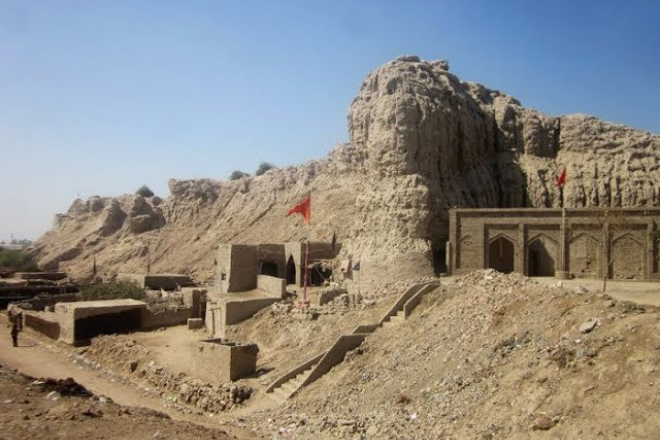
- Ulti Basti is known for its historical architecture and traditional Sindhi culture.
- It provides a unique glimpse into the city’s past.
- Visitors can explore traditional Sindhi houses, narrow alleyways, and local markets.
- The area reflects the rich cultural heritage and daily life of Sehwan Sharif.
Shahbaz Museum Sehwan
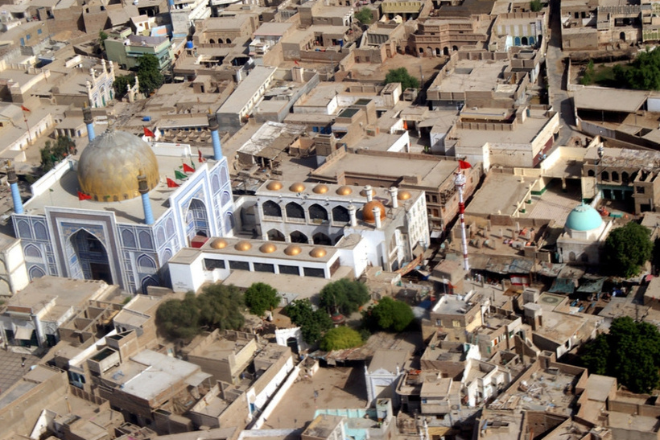
- The Shahbaz Museum reflects the history and ethnicity of Sehwan Sharif and its surrounding region.
- The museum houses artefacts, historical documents, and exhibits related to the life of Lal Shahbaz Qalandar and the history of Sehwan.
- It offers educational insights into the region’s past.
Shrine of Lucky Shah Sadar
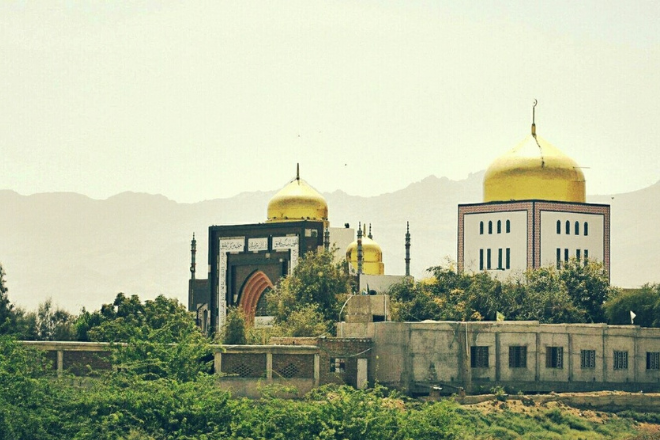
- While not as prominent as the Lal Shahbaz Qalandar Shrine, it is still an important site for local devotees and offers a glimpse into the region’s spiritual diversity.
- This lesser-known shrine is dedicated to Lucky Shah Sadar, a revered figure in local folklore.
Manchar Lake
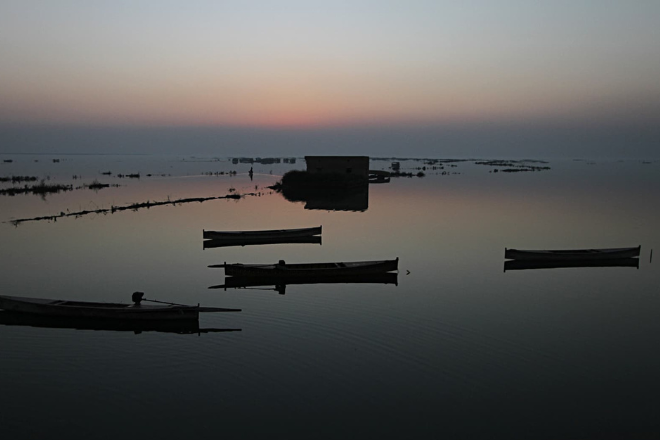
- Manchar Lake is one of the largest freshwater lakes in Pakistan, located near Sehwan Sharif.
- The lake is a significant ecological site, supporting a variety of bird species and local wildlife.
- It offers scenic views and opportunities for boating and bird-watching.
Bodla Bahar Tomb
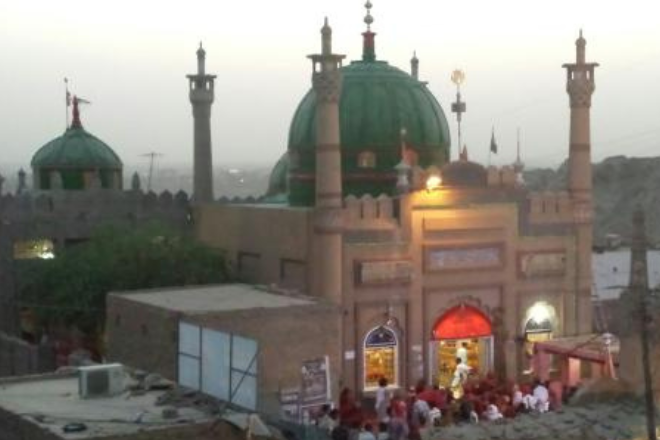
- It is a historical tomb located near Sehwan Sharif.
- It is believed to be the final resting place of a notable figure from the region’s history.
- The tomb’s architecture and inscriptions provide insights into the local historical and cultural context.
Sehwan Sharif Weather Overview
Season | Month | Temperature Range | Weather Conditions |
Winter | November-February | 10°C to 25°C | Mild and pleasant |
Summer | March-June | Above 40°C | Extremely hot; stay hydrated |
Monsoon | July-September | 30°C to 40°C | Moderate rainfall; occasional flooding |
Autumn | October | 20°C to 35°C | Moderate temperatures; favorable for travel |
Accommodations in Sehwan Sharif
Sehwan Sharif offers various accommodation options to suit different preferences and budgets. Some of them are as follows:
Hotels
Sehwan Sharif has some best hotels that offers essential amenities including Wi-Fi, free parking and a restaurant. They deliver elegance and well-regarded comfort, making it a convenient option for travelers.
Guest Houses
Situated near the central area, some of the guest houses provide a homely and hospitable atmosphere with essential amenities, ideal for those looking for a more personal stay.
Budget Accommodations
Local Lodges: Various budget lodges are available around Sehwan Sharif, offering economical and simple accommodations for travelers looking to save on costs.
Religious Accommodation
Accommodation near Shrine of Lal Shahbaz Qalandar: There are several accommodation options close to the shrine, providing convenient access for pilgrims and visitors with basic amenities.
Distances from Major Cities
Cities | Distance | Estimated Travel Time |
From Rawalpindi to Sehwan Sharif | 800 km | 10-12 hours |
From Islamabad to Sehwan Sharif | 750 km | 9-11 hours |
From Karachi to Sehwan Sharif | 200 km | 3-4 hours |
From Lahore to Sehwan Sharif | 650 km | 8-10 hours |
From Multan to Sehwan Sharif | 400 km | 5-6 hours |
From Quetta to Sehwan Sharif | 700 km | 9-11 hours |
From Peshawar to Sehwan Sharif | 850 km | 11-13 hours |
From Faisalabad to Sehwan Sharif | 500 km | 6-7 hours |
From Gujranwala to Sehwan Sharif | 600 km | 7-8 hours |
Community and Social Life in Sehwan Sharif
Community Bonds: The community in Sehwan Sharif is closely-knit, with strong familial and social ties. Community events and gatherings play a significant role in social life.
Religious Practices: Religion plays a central role in daily life, with regular attendance at the mosque and participation in community prayers and events.
Festivals in Sehwan Sharif
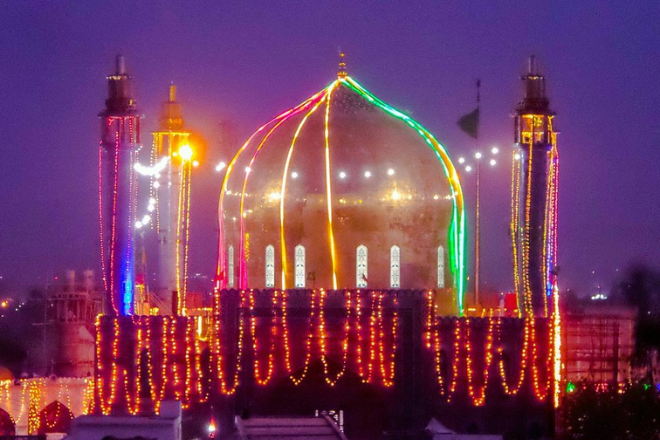
Urs of Lal Shahbaz Qalandar: The annual festival celebrates the saint’s death anniversary with grand ceremonies. It welcomes pilgrims from across Pakistan and beyond who come to pay their respects and seek blessings. It features large gatherings, prayers, and various devotional activities.
Local Festivals: Celebrations of Eid, Ramadan, and other Islamic festivals are vibrant and well-attended.
Music and Dance
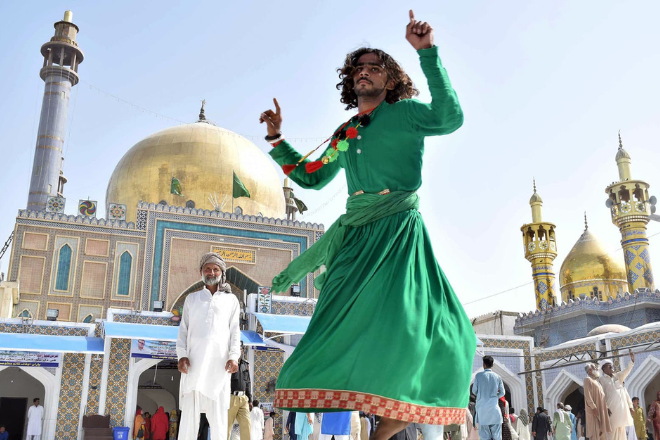
Sufi Music: The city is known for its Sufi music, with qawwalis (devotional songs) and other traditional forms being performed regularly. The music often includes themes of love, devotion, and spiritual longing.
Dhamaal: A traditional Sufi dance performed during religious ceremonies and festivals. It involves rhythmic, ecstatic movements and is a key aspect of the spiritual experience in Sehwan Sharif.
Special Food of Sehwan Sharif
Special Food | Speciality |
Biryani | A fragrant and flavorful rice dish made with spices, meat, and vegetables. |
Haleem | A thick stew made with wheat, barley, lentils, and meat. |
Seekh Kebab | Grilled meat skewers seasoned with spices and herbs. |
Nihari | A slow-cooked meat stew that is typically eaten for breakfast. |
Lassi | A refreshing yogurt-based drink that comes in sweet and salty varieties. |
Kulfi | A traditional ice cream made with milk, sugar, and flavorings like cardamom, saffron, or pistachio. |
Traditional Dress of Sehwan Sharif
- The people of Sehwan Sharif typically wear traditional Sindhi attire.
- Men often wear Shalwar Kameez, while women wear colorful Shalwar Kameez with intricate embroidery. The attire is often complemented with traditional accessories.
- Given the city’s religious significance, modest dressing is generally observed, especially in and around religious sites.
Arts and Crafts of Sehwan Sharif
Local Handicrafts: The city features local crafts such as traditional Sindhi embroidery, pottery, and textiles. These crafts are often sold in local markets and make for unique souvenirs.
Traditional Art: Art forms associated with Sufism, including calligraphy and intricate designs, are prevalent in the city.
Travel Tips for Visiting Sehwan Sharif
Visiting Sehwan Sharif can be a deeply rewarding experience, especially for those interested in its cultural and religious significance. Here are some preparation tips to ensure a smooth and enjoyable visit:
Plan Your Travel
Best Time to Visit: The most comfortable times to visit Sehwan Sharif are during the cooler months from October to March. Summers can be extremely hot.
Travel Documents: Ensure you have all necessary travel documents, including identification and any required permits. Foreign visitors may need a visa, depending on their nationality.
Transportation: Arrange transportation in advance. Sehwan Sharif is accessible by road from major cities like Karachi and Hyderabad. You may need to hire a tour guide for an insightful experience. We at Guide to Pakistan offer the best tour services to cater to all your needs in the finest way possible.
Accommodation
Book in Advance: Secure your accommodation early, especially if you are traveling during peak pilgrimage times or festivals.
Check Amenities: Confirm the amenities offered by your accommodation, such as Wi-Fi, food services, and air conditioning, to ensure a comfortable stay.
Health and Safety
Vaccinations and Health Precautions: Carry a basic medical kit and any personal medications.
Food and Water: Drink bottled or filtered water and be cautious about street food to avoid foodborne illnesses.
Cultural Sensitivity
Dress Modestly: As Sehwan Sharif is a religious site, dress modestly. Both men and women should wear clothing that covers their arms and legs.
Respect Local Customs: Familiarize yourself with local customs and religious practices. Be respectful when visiting religious sites and interacting with locals.
Pack Accordingly
Clothing: Pack light, breathable clothing for warm weather and warmer layers if visiting during cooler months. Comfortable walking shoes are essential.
Essentials: Bring essentials like sunscreen, a hat, sunglasses, and a reusable water bottle.
Financial Preparation
Currency: Carry local currency (Pakistani Rupees) for small purchases. ATMs may be available, but it’s wise to have cash on hand.
Budgeting: Plan your budget, considering accommodation, food, transportation, and any entrance fees for religious sites or attractions.
Local Information
Emergency Contacts: Note down local emergency contacts and the location of the nearest hospital or medical facility. Contact Rescue 1122, Police Helpline 15, in case of any emergency.
Local Language: While Urdu is widely spoken, learning a few basic phrases or carrying a translation app can be helpful.
Conclusion
Sehwan Sharif is a captivating destination that offers a unique blend of history, culture, and spirituality. From the magnificent shrine of Lal Shahbaz Qalandar to the historical Sehwan Fort, the city has much to offer visitors seeking a deeper understanding of Sindh’s rich heritage. Whether you’re a pilgrim, a history buff, or simply someone in search of a memorable experience, Sehwan Sharif is a place that will leave a lasting impression on your heart and mind.
Guide to Pakistan is a valuable resource for discovering the country’s diverse attractions. It provides detailed information on various tourist spots, cultural sites, and natural landscapes. With insights on local customs, accommodations, and travel routes, it helps travelers explore Pakistan’s rich heritage and scenic beauty.



